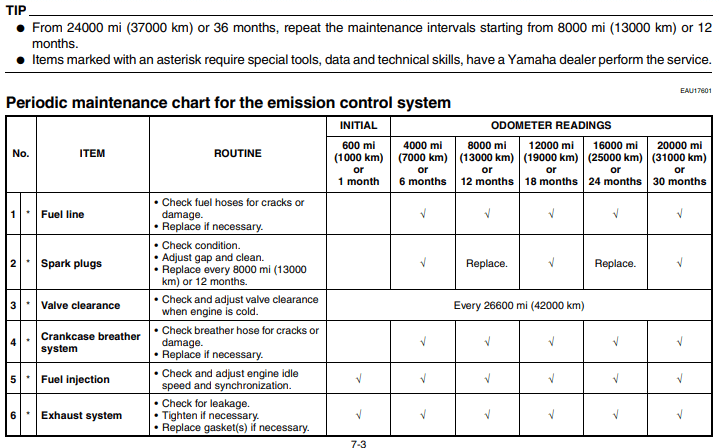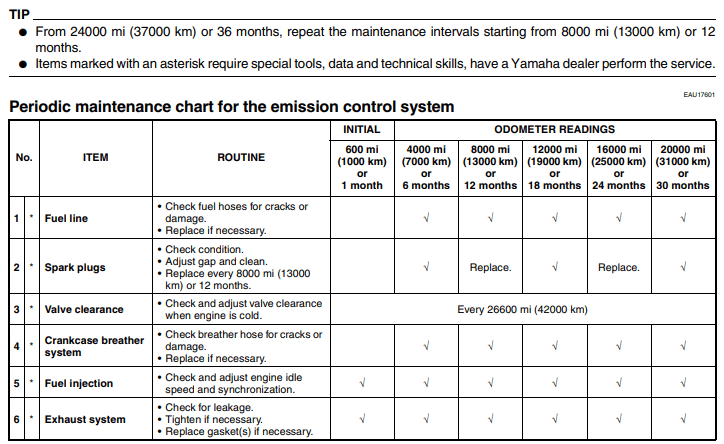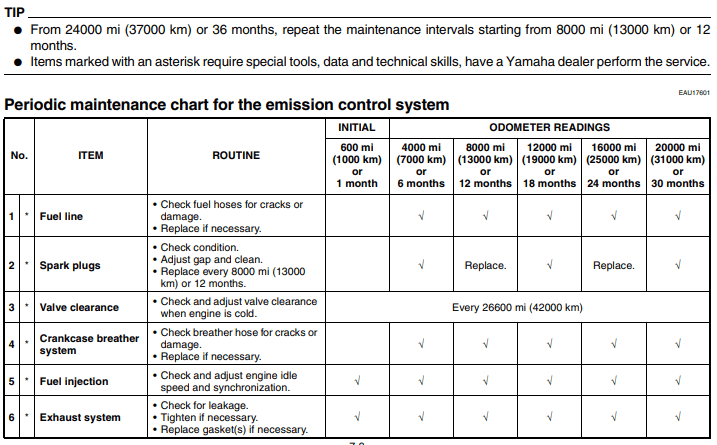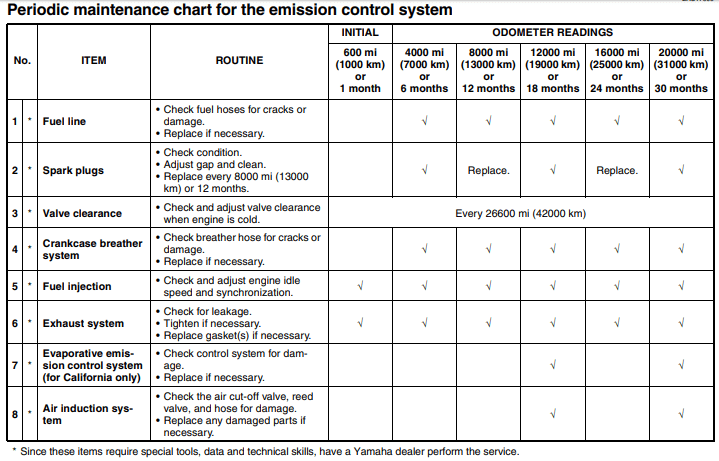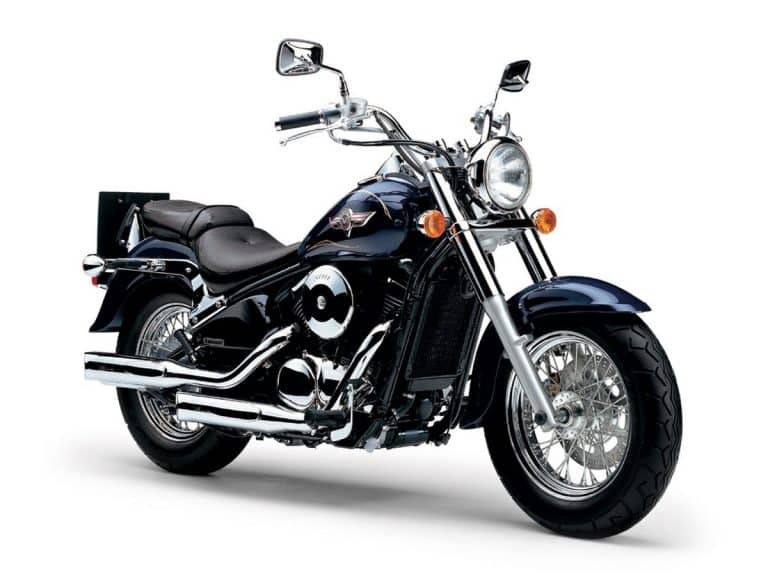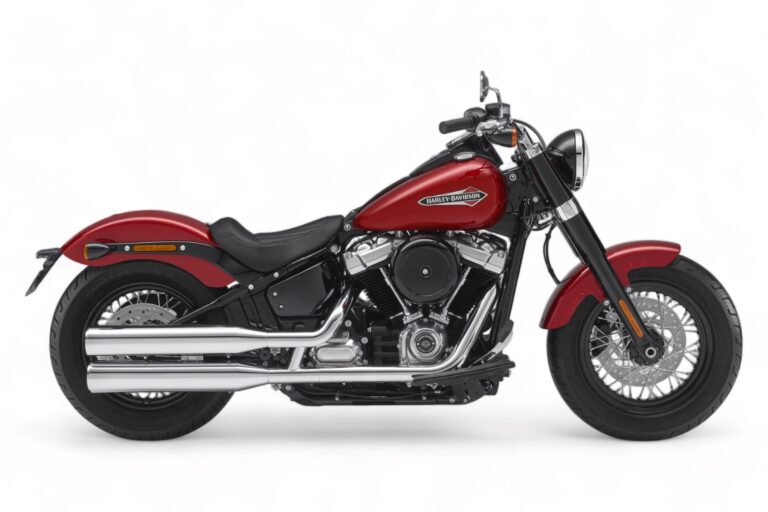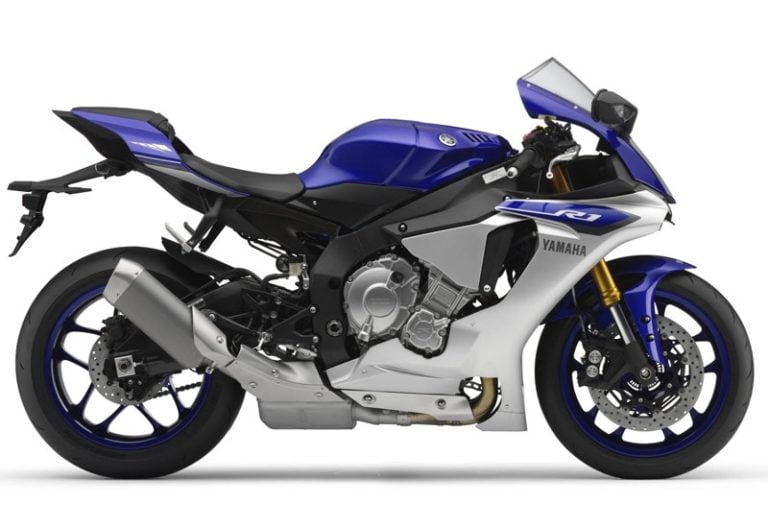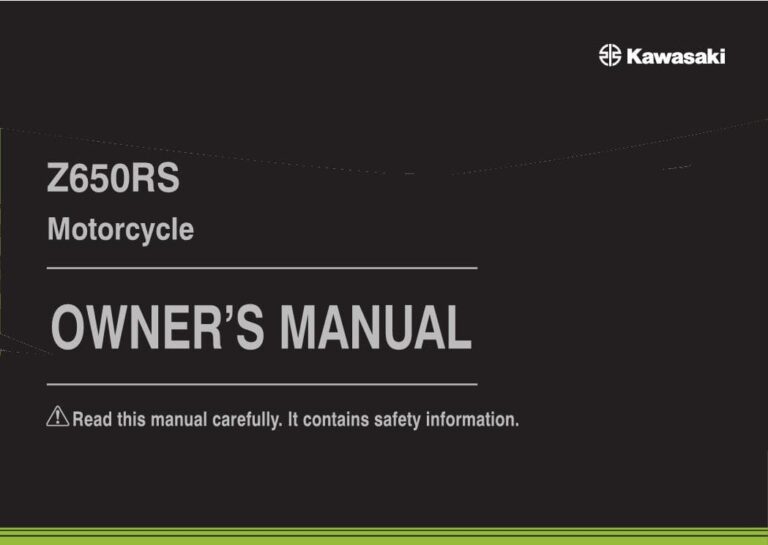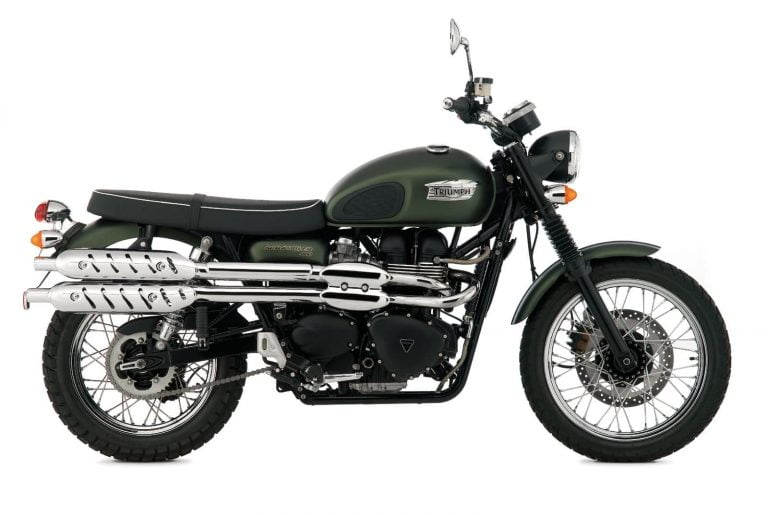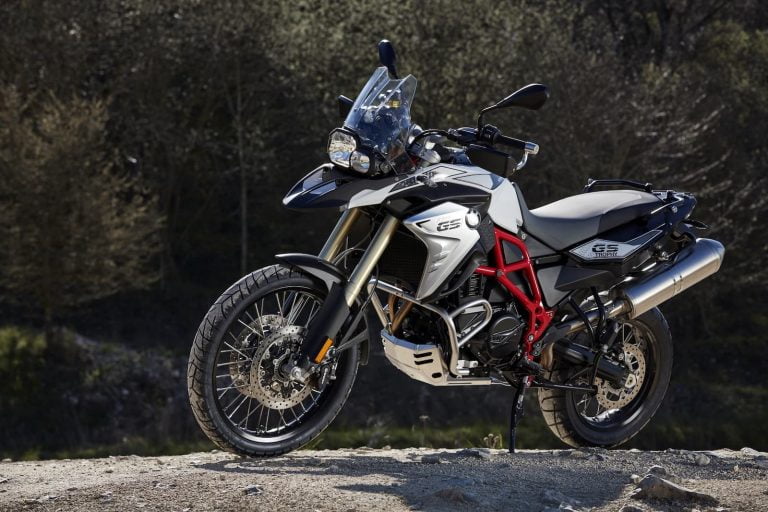Yamaha FZ6R (2009-2017) Maintenance Schedule and Service Intervals
This is the maintenance schedule and associated service intervals for the Yamaha FZ6R. The FZ6R was made from 2009 and kept in production until 2017 in some parts of the world, and while it got some tuning updates in that period to improve the response, it remained largely unchanged form a maintenance perspective.
The Yamaha FZ6R is quite different to the Yamaha FZ6, Yamaha’s other standard bike — it’s a lower spec, cheaper model.
The Yamaha FZ6R was intended to compete with the likes of the Kawasaki Ninja 650 and the Suzuki SV650. But it’s differentiated in that the FZ6R is powered by a four-cylinder engine, these days a rarity in middleweight bikes.
The four-cylinder 599 cc in the Yamaha FZ6R engine makes 57 kW / 78 hp at 11500 rpm, but with a more linear torque curve than the more aggressively tuned (and higher-power) FZ6. The linear torque curve makes the FZ6R a much more usable bike in everyday riding where one rarely gets to 10000 rpm.
The FZ6R also trades the FZ6’s aluminium frame for a steel frame. It’s thus heavier, but also cheaper. Other cost-reducing factors are conventional (non-inverted) forks and two-piston calipers on the front discs.
On the other hand, the FZ6R has a full fairing, which looks pretty great.
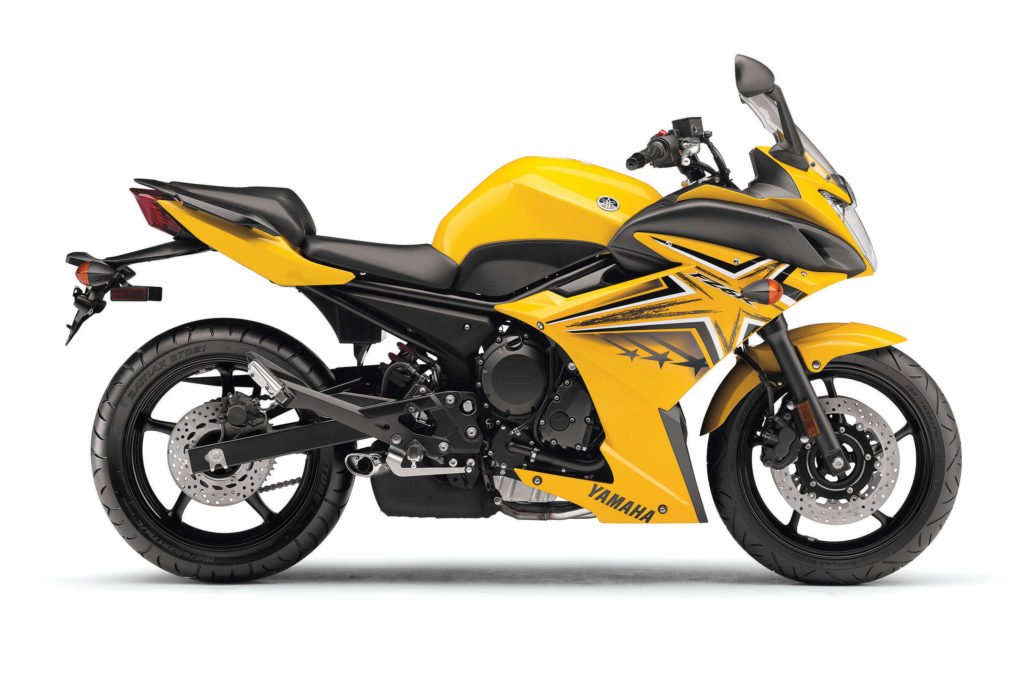
This site has links for things like oil and spark plugs from which we earn a commission (which unfortunately nobody can save, not even us). If you appreciate this work, then please use those links. Thanks!
Yamaha FZ6R Maintenance Schedule
Below is the maintenance schedule for the Yamaha FZ6R.
We considerably simplified the maintenance schedule for the Yamaha FZ6R from the manual. For example, we
- Consolidated the sections related to emissions and “general” maintenance
- Re-ordered the items so the most important were on top (e.g. changing engine oil)
- Consolidated a few menial tasks into one
Yamaha recommends you only maintain the chain and change the oil, plus keep general lubrication up to date, and leave everything else up to a dealer.
Notes on the maintenance schedule:
- From the end of the maintenance schedule, keep following it in the pattern shown.
- Follow the earlier of time-based or distance-based schedule items, where relevant, e.g. changing engine oil.
- Some items just have a time base, e.g. changing brake fluid
| mi x 1000 | 4 | 8 | 12 | 16 | 20 | |
|---|---|---|---|---|---|---|
| km x 1000 | 7 | 13 | 19 | 25 | 31 | |
| Months | 6 | 12 | 18 | 24 | 30 | Every |
| Change engine oil (warm engine before draining) (Yamalube 10W-40) | ✓ | ✓ | ✓ | ✓ | ✓ | |
| Change oil filter (HF204RC) | ✓ | ✓ | ||||
| Check spark plugs. Adjust gap and clean. | ✓ | ✓ | ✓ | |||
| Replace spark plugs | ✓ | ✓ | ||||
| Check and adjust valve clearance when engine is cold | 26600 mi (42000 km) | |||||
| Check and adjust engine idle speed and fuel injector synchronization. | ✓ | ✓ | ✓ | ✓ | ✓ | |
| Replace air filter (YA-6009) | 24000 mi (37000 km), or more often after riding in dust / rain | |||||
| Check clutch operation. Adjust or replace cable. | ✓ | ✓ | ✓ | ✓ | ✓ | |
| Check front brake operation, fluid level, and for fluid leakage. Replace brake pads if necessary. | ✓ | ✓ | ✓ | ✓ | ✓ | |
| Check rear brake operation, fluid level, and for fluid leakage. Replace brake pads if necessary. | ✓ | ✓ | ✓ | ✓ | ✓ | |
| Check brake hoses for cracks or damage. | ✓ | ✓ | ✓ | ✓ | ✓ | |
| Replace brake hoses. | 4 years | |||||
| Replace brake fluid (Castrol DOT 4) and rubber parts of brake master cylinder / calipers | 2 years | |||||
| Check cooling hoses for cracks or damage. Replace if necessary. | ✓ | ✓ | ✓ | ✓ | ✓ | |
| Change coolant (Ethylene glycol pre-mix) | 2 years | |||||
| Lubricate control cables thoroughly (Protect all cable life). | ✓ | ✓ | ✓ | ✓ | ✓ | |
| Check throttle operation, adjust the throttle cable free play if necessary, and lubricate the throttle grip housing and cable. | ✓ | ✓ | ✓ | ✓ | ✓ | |
| Check operation of lights, signals, and switches. | ✓ | ✓ | ✓ | ✓ | ✓ | |
| Adjust headlight beam. | ✓ | ✓ | ✓ | ✓ | ✓ | |
| Check wheels for runout and for damage. Replace if necessary. | ✓ | ✓ | ✓ | ✓ | ✓ | |
| Check tyre tread depth and for damage. Replace if necessary. | ✓ | ✓ | ✓ | ✓ | ✓ | |
| Check wheel bearings for smooth operation. Replace if necessary. | ✓ | ✓ | ✓ | ✓ | ✓ | |
| Check swingarm pivot bearing assemblies for looseness. | ✓ | |||||
| Moderately repack swingarm pivot bearings with lithium-soap-based grease. | 32000 mi / 50000 km | |||||
| Check steering bearing assemblies for looseness. | ✓ | ✓ | ✓ | ✓ | ✓ | |
| Moderately repack steering bearing with lithium-soap-based grease. | 12000 mi (19000 km) | |||||
| Check all chassis fitting and fasteners. Correct if necessary. | ✓ | ✓ | ✓ | ✓ | ✓ | |
| Lubricate brake lever pivot with silicone grease lightly. | ✓ | ✓ | ✓ | ✓ | ✓ | |
| Lubricate brake pedal, clutch lever, and shift pedal with lithium soap-based grease lightly | ✓ | ✓ | ✓ | ✓ | ✓ | |
| Check centerstand and sidestand. Apply lithium-soap-based grease lightly. | ✓ | ✓ | ✓ | ✓ | ✓ | |
| Check sidestand operation and replace if necessary. | ✓ | ✓ | ✓ | ✓ | ✓ | |
| Check fork operation and for oil leakage. Replace if necessary. | ✓ | ✓ | ✓ | ✓ | ✓ | |
| Check shock absorber operation and for oil leakage. Replace if necessary or rebuild if possible. | ✓ | ✓ | ✓ | ✓ | ✓ | |
| Check front and rear brake switches for correct operation | ✓ | ✓ | ✓ | ✓ | ✓ | |
| Check fuel hoses for cracks or damage. Replace if necessary. | ✓ | ✓ | ✓ | ✓ | ✓ | |
| Check crankcase breather hose for cracks or damage | ✓ | ✓ | ✓ | ✓ | ✓ | |
| Check exhaust for leakage. Tighten if necessary, and / or replace gaskets. | ✓ | ✓ | ✓ | ✓ | ✓ | |
| Check evaporative emission control system for damage. Replace if necessary | ✓ | ✓ | ||||
| Check air induction cut-off valve, reed valve, and hose for damage. Replace any damaged parts. | ✓ | ✓ |
Maintaining Your Chain on the Yamaha FZ6R
It’s important to maintain your chain on the FZ6R, as on any chain-driven motorcycle. Use a good-quality chain lubricant like Motul chain paste, or a Motul chain care kit which comes with a couple of handy tools to maintain the chain.
Yamaha recommends you follow the following chain maintenance schedule every 500 mi / 800 km and after washing the motorcycle, riding in the rain, or riding in wet areas.
| Chain maintenance item |
|---|
| Check drive chain lubrication condition, lubricating if necessary (Motul chain paste) |
| Check drive chain slack, alignment, and condition, adjusting / replacing if necessary |
Naturally, if you track or race your FZ6R, then attend to your chain more often.
About the Yamaha FZ6R
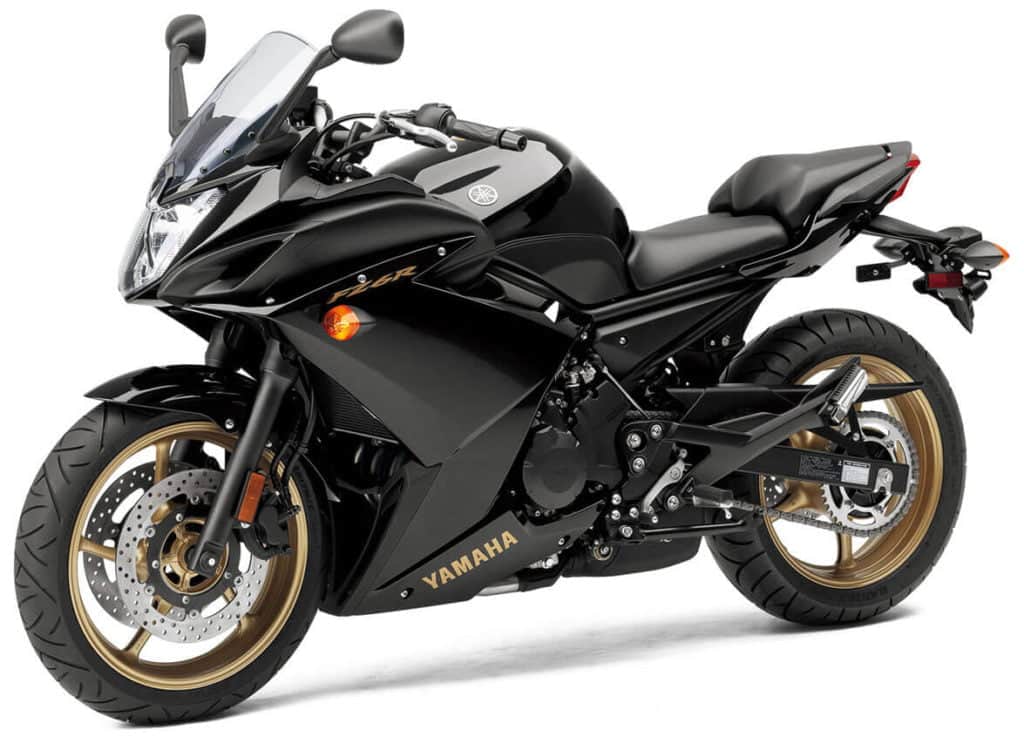
The Yamaha FZ6R is an everyday upright sportbike that’s designed to be comfortable and non-intimidating for new riders.
The FZ6R is conceptually based on the Yamaha FZ6, but it’s detuned to be much more midrange focused, and lacks the top end punch of the FZ6 (let alone the Yamaha YZF-R6 on which the FZ6 was based).
The FZ6R is, like its 600 cc class compatriots, based on a 599 cc dual overhead cam 16-valve inline four-cylinder engine.
When first released, the Yamaha FZ6R’s engine had a 12.2:1 compression ratio, and managed to eke out some 57 kW / 78 hp at 11500 rpm. Dynos showed it doing around 49 kW / 66 hp at the rear wheel. Not bad! But a far cry from the numbers of supersport bikes.
Those looking for a pure sportbike should look at the FZ6 (or the R6…), but the FZ6R is great for everyone else. It’s comfortable from the moment you swing a leg over the seat. It is a sports bike that does not make any earth-shattering claims; just a machine that does its job and makes commuting a joy.
The Yamaha FZ6 has very simple but effective ride gear. The front is a 41mm telescopic cartridge-style fork — conventional and non-adjustable. The rear shock is adjustable for preload only, with 7-way adjustability.
There are 298 mm discs up front, but just two-piston calipers on each side. It’s enough, but of course it’s not meant to be pushed with lots of stop-start racing.
Yamaha FZ6R Wheels and Tire Pressures
Below are the tire sizes and recommended tire pressures for the Yamaha FZ6R.
| Wheel | Tire size | Tire pressure (cold) |
|---|---|---|
| Front | 120/70 ZR 17 | 33 psi / 225 kPa / 2.25 bar |
| Rear | 160/60 ZR 17 | 36-42 psi / 250-290 kPa / 2.5-2.9 bar (depending on weight) |
Manual for the Yamaha FZ6R
The above information was gleaned from the owner’s manual for the 2012 Yamaha FZ6R, and compared with other versions of the manual. Screenshots from several of them are below
You can download it from Yamaha’s website here.
